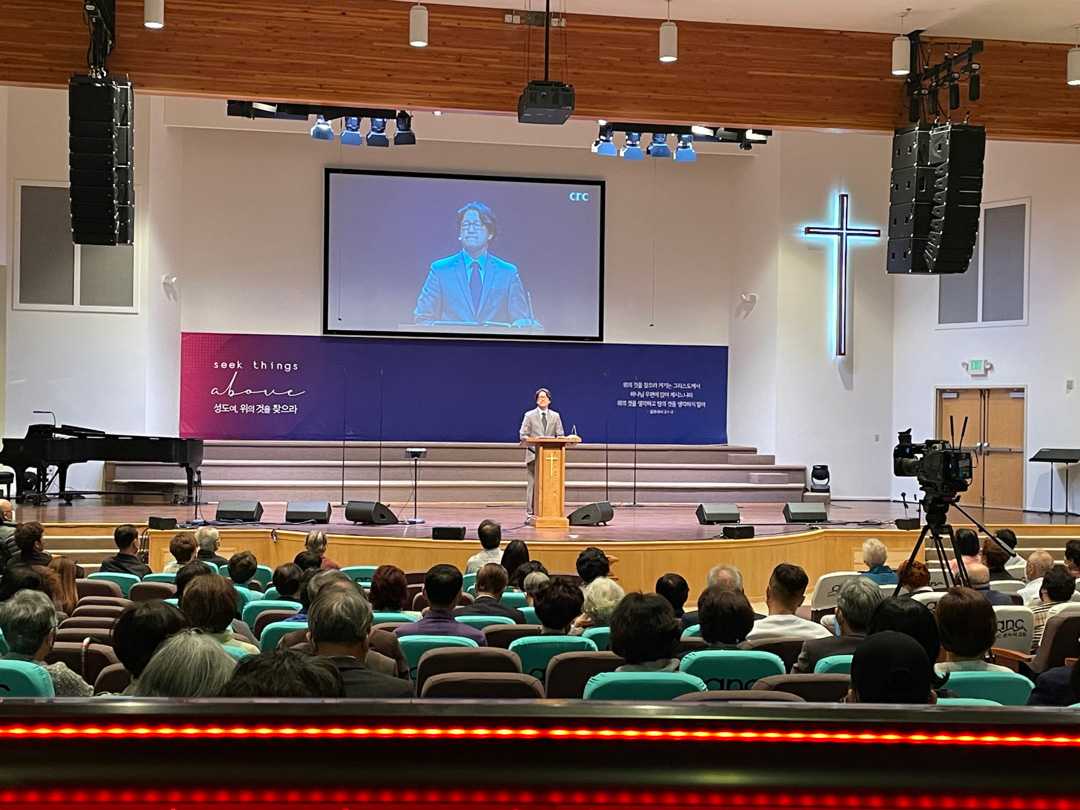Coda Audio’s N-Ray for All Nations
- Details

For a long time, ANC had deployed a system comprising a centre cluster of loudspeakers in mono. This system had begun to show signs of deterioration, demanding frequent repair, and the decision was made to seek a modern, high quality system of lighter and more compact units.
The church invited a number of vendors to demonstrate different systems. One of those invited was Troy Choi of Solid Sound Solution, who demonstrated a Coda Audio N-RAY system, having deployed CODA systems on two previous very challenging church projects where he worked closely with Coda Audio USA’s team.
“The N-RAY is a beautiful, high quality and compact box that looks gorgeous when it hangs in the air, and produces crystal clear high frequency even at low SPL,” he says. “For all its compact appearance, it’s actually a very powerful beast. Years ago, we needed big boxes to create a big sound but now compact boxes make big sounds. N-RAY is the best example! Around a year ago I installed an N-RAY system at Grace Ministries International Church in LA. They’ve since had many big events and the results have been brilliant - to be honest it’s the best high frequency sound I’ve ever heard - so I had a lot of confidence that it would be the ideal choice for ANC’s needs.”
After Coda Audio N-RAY was considered against a number of systems from other leading manufactures, Solid Sound Solution was awarded the contract to install ANC’s new system.
The early stages of the job saw Choi and Coda Audio USA’s technical director Michael Creason take close account of this large space where reflected sound could prove challenging. Using Coda’s System Optimiser software, they were able to make accurate predictions that would ensure that their system design matched the precise requirements of the site.
Creason explains: “The system needed to be aesthetically acceptable whilst retaining concert-level headroom for high energy praise. It also needed to serve both the existing mix position at the front of the balcony and a new one at the rear of the main floor, whilst giving the ability to separate the balcony zone when not in use. The main N-RAY hangs are supplemented with loudspeakers from our APS (arrayable point source) and HOPS (high output point source) ranges to take care of the balcony, outfill and frontfill areas. The uniform sonic signature across our range of loudspeakers means that we are able to ensure total consistency of quality and coverage.”
The main hangs comprise 8 x N-RAY and a single SCN sensor-controlled low frequency extension per side, supplemented by 4 x SCV sensor-controlled subwoofers flown in a cardioid array. A central array of 3 x APS act as a delayed fill for the balcony, while a single HOPS8 per side acts as out-fill. 4 x HOPS5 act as front-fills across the stage lip, with 3 x CUE Four and 4 x HOPS8 as stage monitoring.
Choi adds: “Everyone is just blown away by N-RAY. Expectations in the Church were definitely high - they had been patient with their process of identifying the right choice of system, so it had to be perfect. We were painstaking in our work to make sure that every aspect was spot on, and while it was a challenging job, we have been rewarded with a universal thumbs-up from everyone involved.
“After the first Sunday service with the new system in place - I was there to mix and train - the senior pastor Tae Kim came to me with a big smile and said that he felt immediately comfortable delivering his sermon, and that members of the congregation had commented to him about the improvement in clarity. The Church’s Technical Director, Daniel Shin, who was involved in researching and choosing the system declared that it far exceeded even the highest standards he had considered.”
















